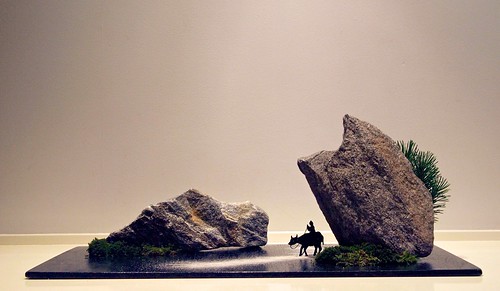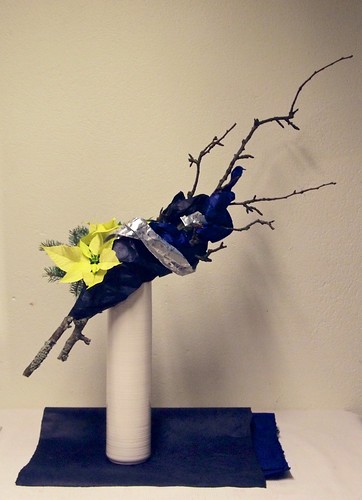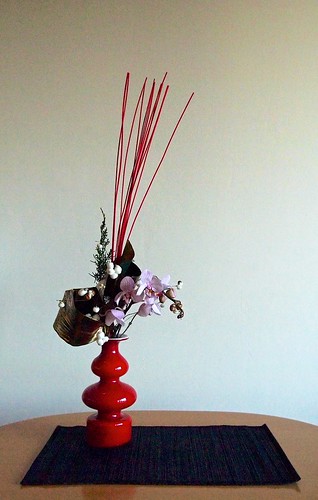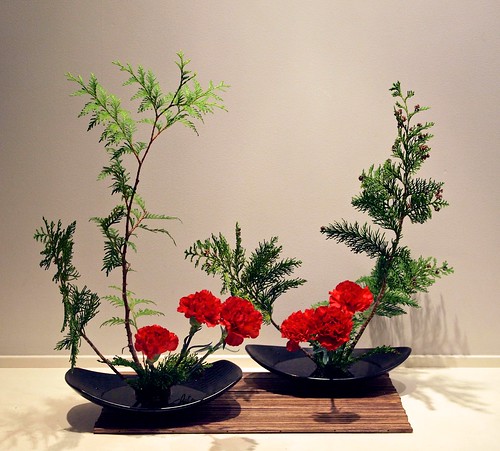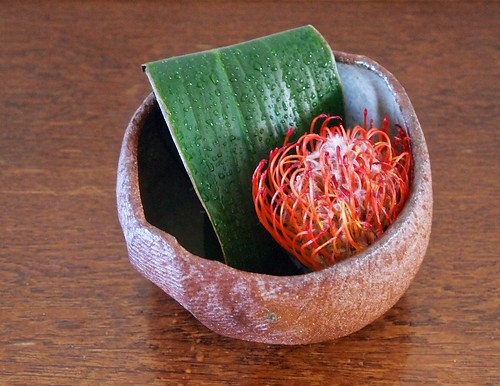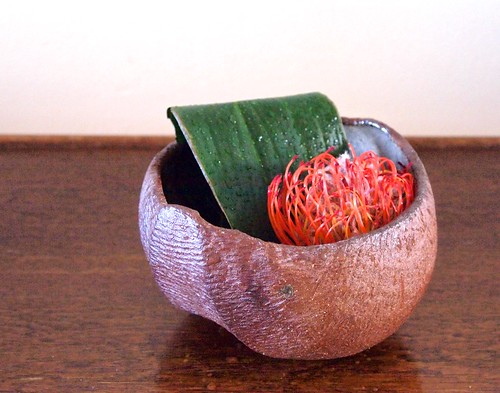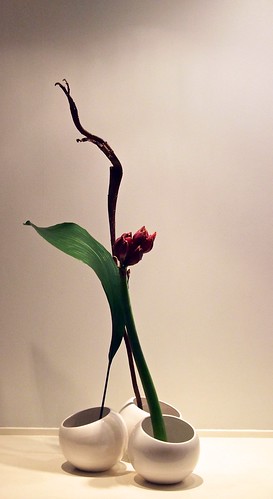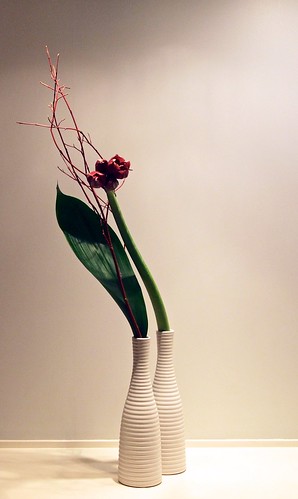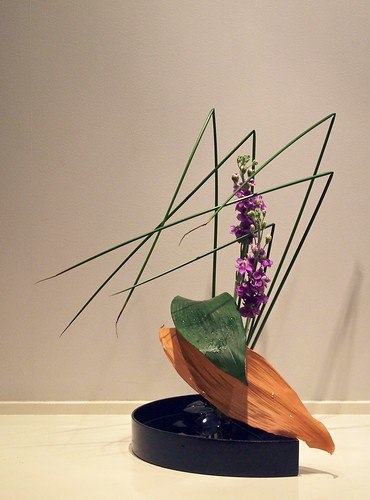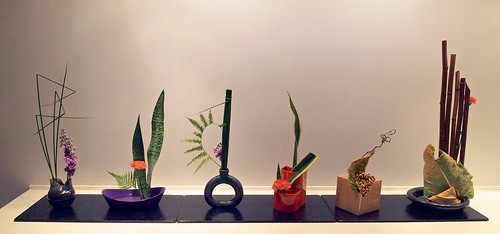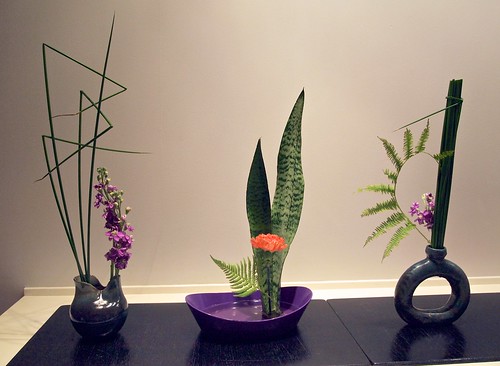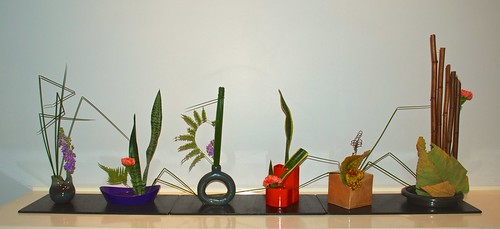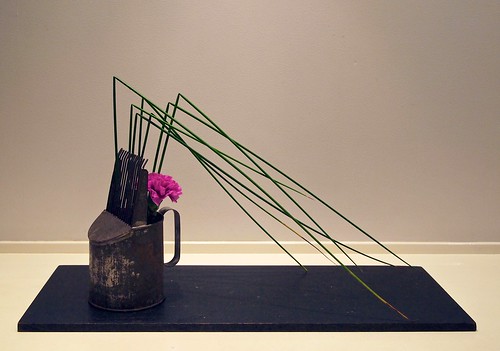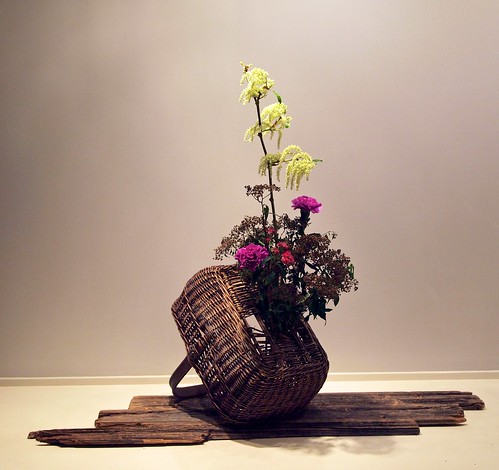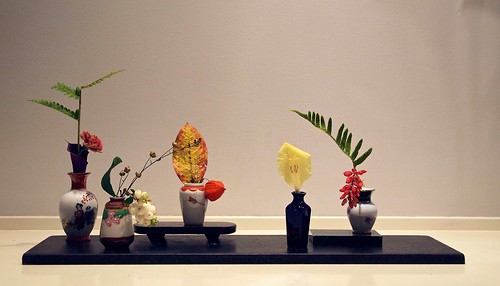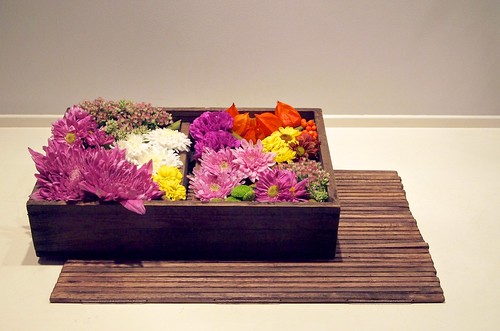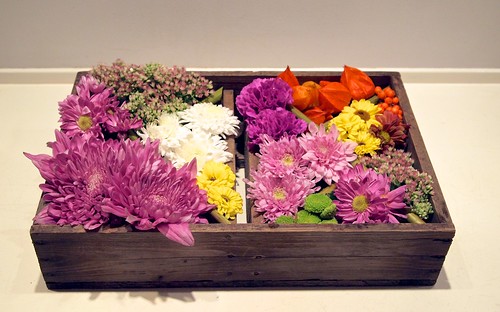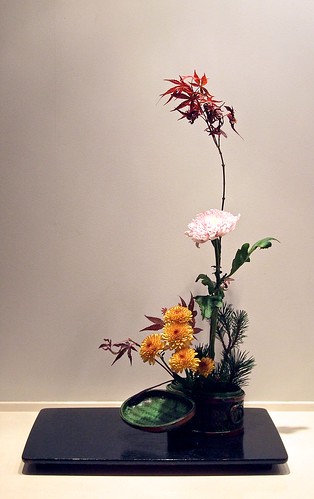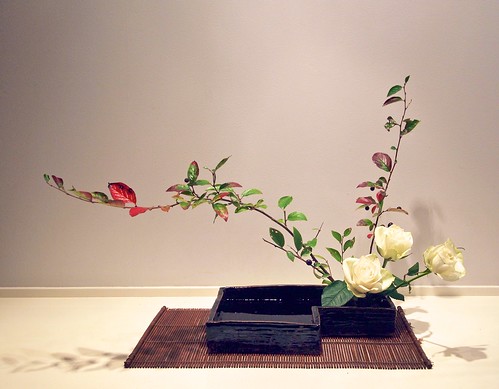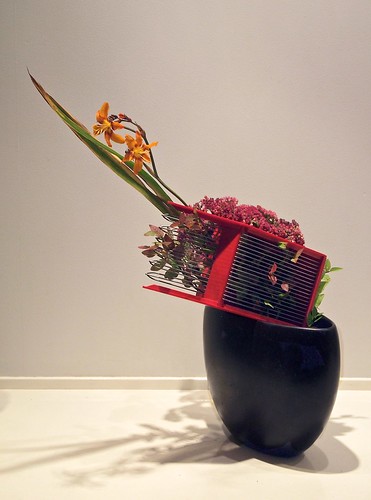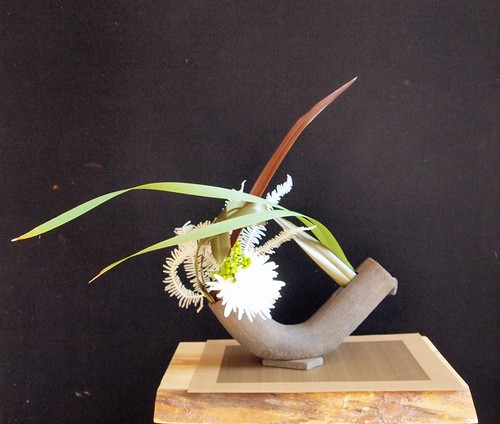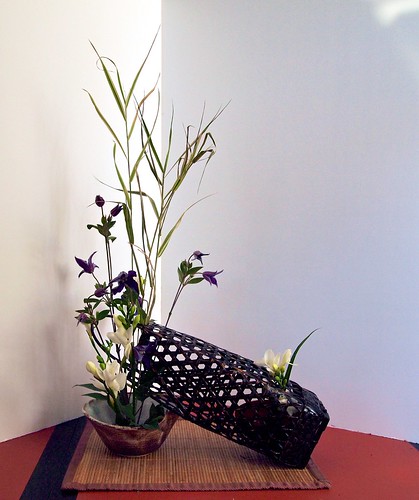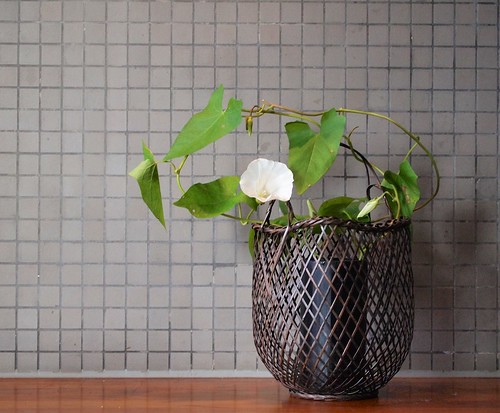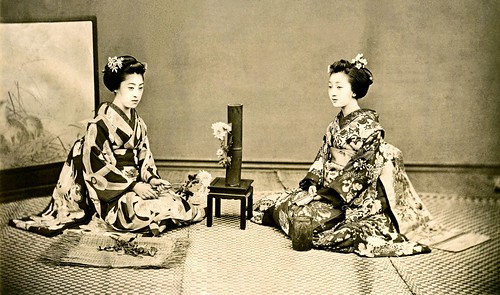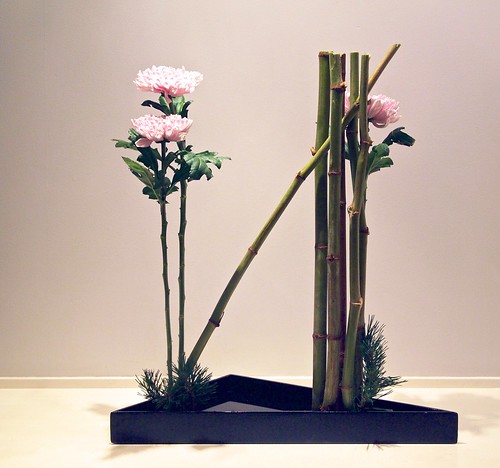Rocks, pine, moss, sand and metal figure.
Landscape morimono ikebana.
Landscape morimono ikebana.
New Year is a celebration with very rich traditions when it comes to ikebana. Traditional materials with deep symbolic meaning are used, again and again every year. Although it could be interesting to look more into those traditions I've chosen a totally different theme for this New Years greeting.
Suiseki is a japanese tradition of collecting rocks and stones with special shapes and character, often resembling dramatic mountains in miniature. These rocks are appreciated as art objects, treasured and exhibited. They are also used in bonsai and bonseki (sand landscapes on black lacquer trays). Suiseki are sometimes also used in a special form of landscape ikebana, combining rocks with plant materials and small figures in this unusual category of morimono arrangement (morimono meaning "arranging things on something").
The little man traveling on his water buffalo, with high mountains hiding the next curve of the path, gives the landscape a quality of quiet thoughtfulness. Moving on he leaves some things behind. Is he thinking of the goal for this days trip or is he just enjoying the moment? New Year is a time for contemplation, a lonesome moment of thoughtful travel in-between the joyful toasts and glamourous celebrations.
